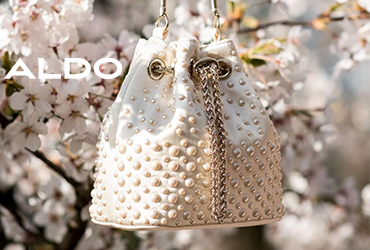Enter the Year of the Dragon: A 2024 guide to Lunar New Year
Science and culture
At this very moment, millions of people around the world are busy preparing for one of the year’s biggest festivals – Lunar New Year, which marks the first new moon of the lunar calendar.
This year, it falls on February 10, kicking off the 15-day Spring Festival.
Whether you’re unfamiliar with Lunar New Year or need a refresher, this guide will highlight some of the most common traditions associated with the occasion.
Why is it the Year of the Dragon?
Though incredibly complex, the Chinese zodiac calendar is best described as a 12-year cycle represented by 12 different animals, in this order: Rat, Ox, Tiger, Rabbit, Dragon, Snake, Horse, Goat, Monkey, Rooster, Dog and Pig.
Your personal zodiac animal sign is determined by your year of birth, meaning 2024 will welcome plenty of baby dragons to the world. Those born in 2025 will be snakes, and so on.
Followers believe that for each Chinese zodiac sign, luck will depend largely on the positions of the Tai Sui – a collective name for the stellar deities thought to rotate parallel to and in the opposite direction of Jupiter.
Different geomancy masters may interpret the data differently, but there is usually a consensus on what the year means for each zodiac animal based on the positions of the stars.
Why light firecrackers and wear red? Meet Nian
There are countless folk tales attached to Lunar New Year, but the myth of “Nian” stands out as one of the most fun.
Legend has it Nian was a ferocious underwater beast with sharp teeth and horns. Every Lunar New Year’s Eve, it crawled onto the land and attacked a nearby village.
On one such occasion, as the villagers rushed into hiding, a mysterious old man showed up and insisted on sticking around despite being warned of impending doom.
To the villagers’ surprise, the old man and the village survived utterly unscathed.
The man claimed to have scared Nian away by hanging red banners on the door, lighting firecrackers and donning red clothing.
This is why wearing the fiery color, along with hanging red banners and lighting firecrackers or fireworks, are Lunar New Year traditions, all of which are still followed today.
The preparation
Fun aside, Lunar New Year can actually be a lot of work. Festivities often last for 15 days – sometimes even more – with different tasks and activities taking place over that period.
It all begins about a week ahead of the new year.
Festive cakes and puddings are made on the 24th day of the last lunar month (February 3 in 2024). Why? The word for cakes and puddings is “gao” in Mandarin and “gou” in Cantonese, which sound the same as the word for “tall.”
As a result, eating these treats is believed to lead to improvements and growth in the coming year. (If you haven’t prepared your own “gou” yet, here’s an easy recipe for turnip cake, a beloved Lunar New Year dish.)
And don’t forget about our friend Nian. No Lunar New Year preparation would be complete without the aforementioned hanging of red banners bearing auspicious phrases and idioms (called fai chun in Cantonese, or chunlian, in Mandarin) at home – beginning with one’s front door.
These will perform double duty – keep Nian away and invite good fortune.
Not all prep work is fun. According to Lunar New Year tradition, a big cleanup should be carried out in homes on the 28th day of the last lunar month, which falls on February 7 this year.
The aim is to rid your home of any bad luck that’s accumulated over the past year.
And don’t clean anything again till February 12, or you’re washing away all that good luck that came in at the start of the new year.
On a related note, some say you shouldn’t wash or cut your hair on the first day of the new year either.
Why? The Chinese character for hair is the first character in the word for prosper. Therefore washing or cutting it off is seen as washing your fortune away.
You’ll also want to avoid purchasing footwear for the entire lunar month, as the term for shoes (haai) sounds like losing and sighing in Cantonese.
(Read more Lunar New Year dos and don’ts here.)
Lunar New Year’s Eve: The big feast
A big family reunion dinner is usually held on Lunar New Year’s Eve, which falls on February 9 this year.
The menu is carefully chosen to include dishes associated with luck, including fish (the Chinese word for it also sounds like “surplus”), puddings (symbolizes advancement) and foods that look like gold ingots (like dumplings).























































 Most Popular
Most Popular 
 Thanks to 129 million drams of donation from Karen Vardanyan, 17 new musical instruments were provided to the Armenian National Philharmonic Orchestra
Thanks to 129 million drams of donation from Karen Vardanyan, 17 new musical instruments were provided to the Armenian National Philharmonic Orchestra




